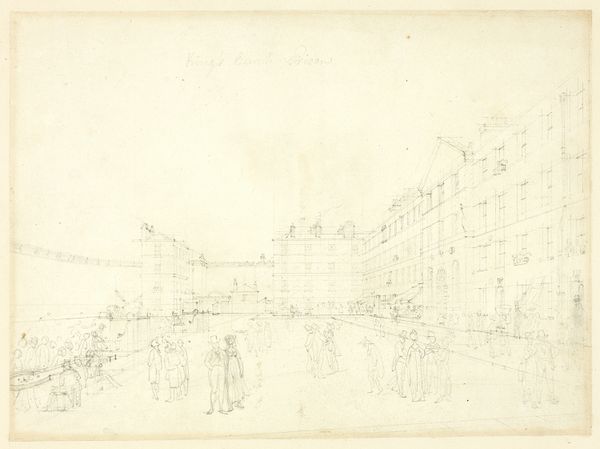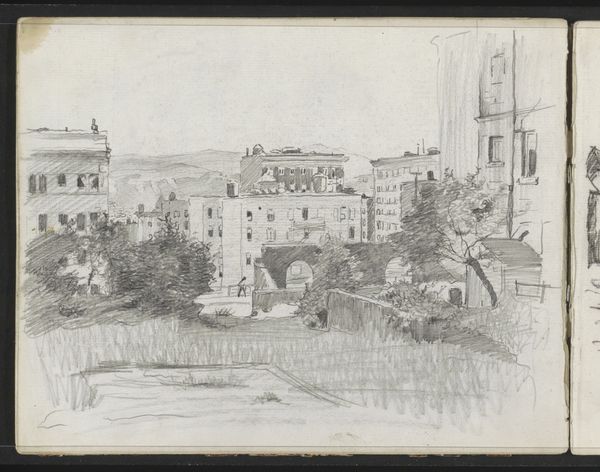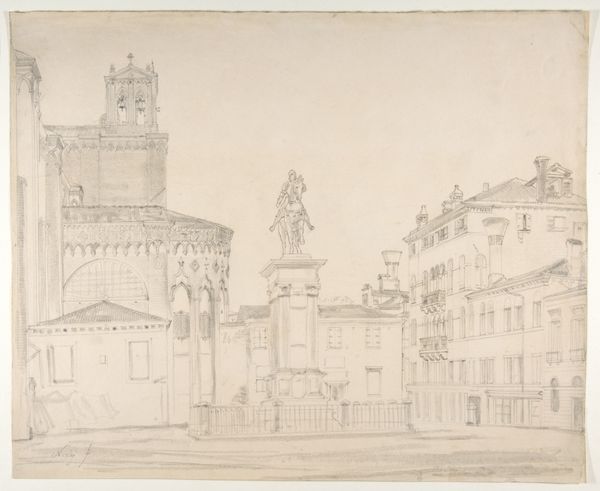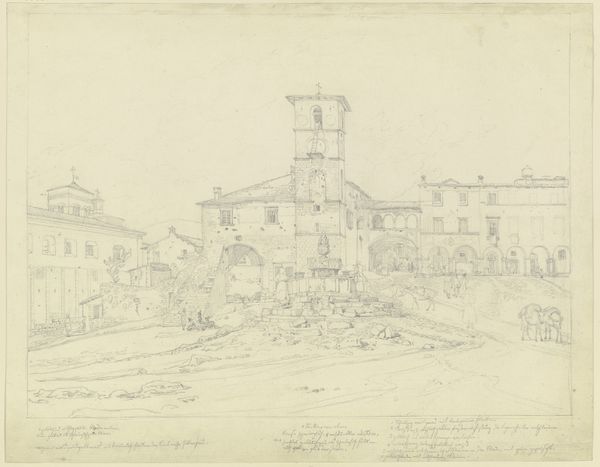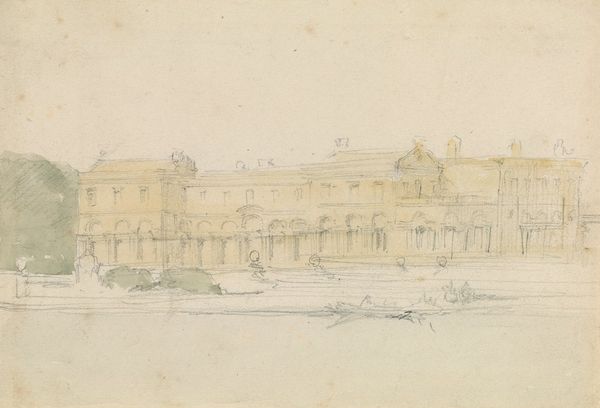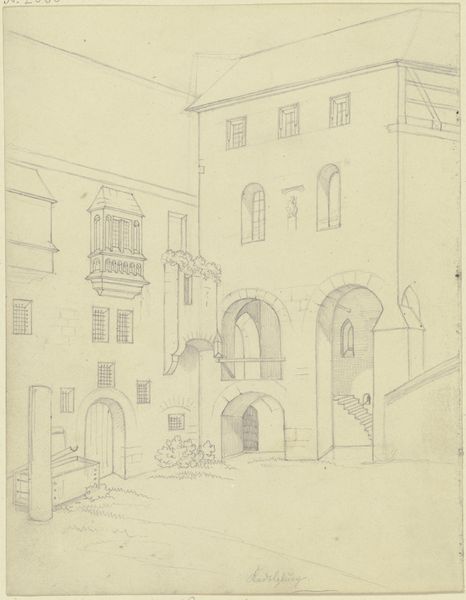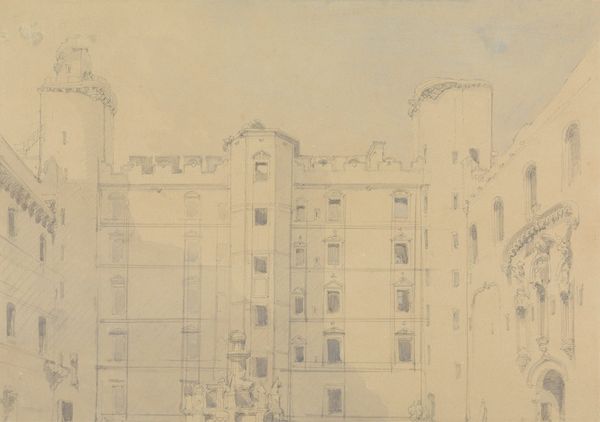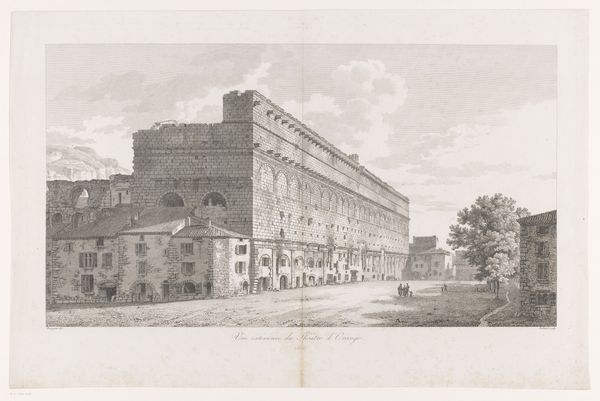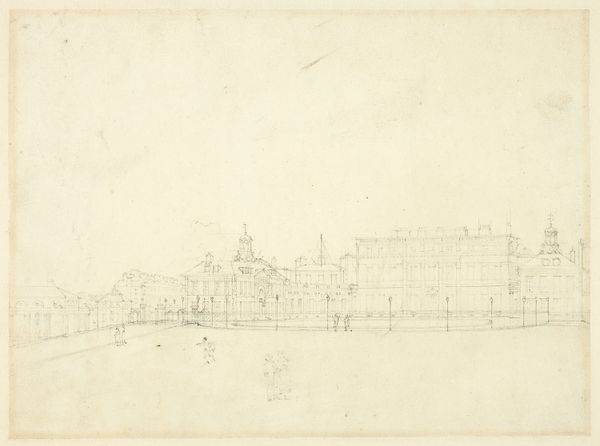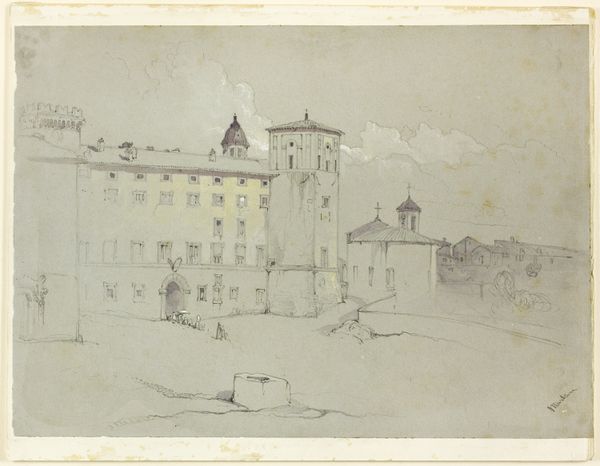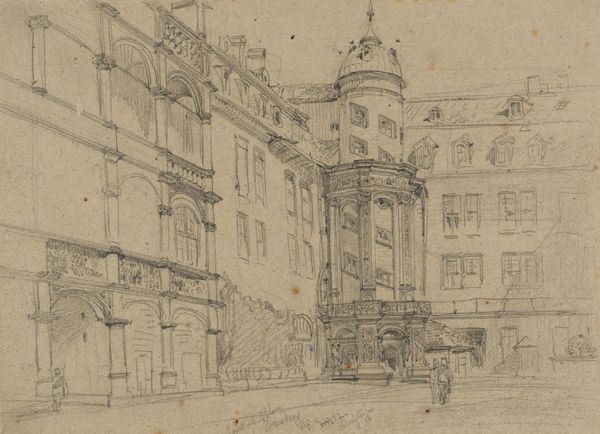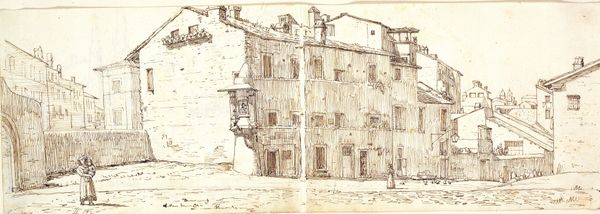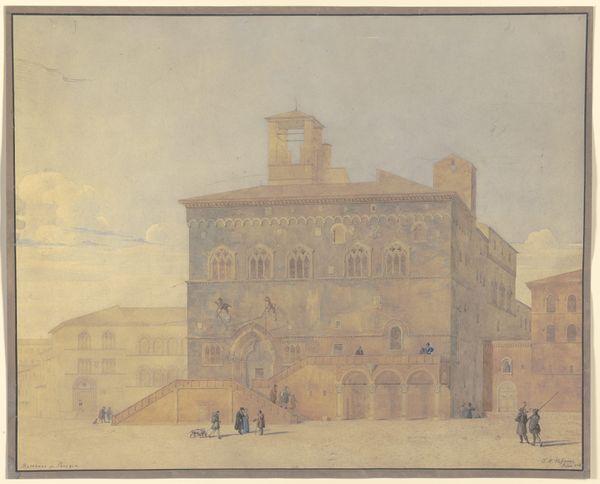
Study for King's Bench Prison, from Microcosm of London c. 1808
0:00
0:00
drawing, print, paper, pencil, graphite, pen
#
architectural sketch
#
drawing
#
neoclacissism
#
aged paper
#
toned paper
# print
#
sketch book
#
landscape
#
paper
#
personal sketchbook
#
sketchwork
#
england
#
pen-ink sketch
#
pencil
#
water
#
pen work
#
graphite
#
sketchbook drawing
#
pen
#
cityscape
#
sketchbook art
Dimensions: 165 × 295 mm
Copyright: Public Domain
Curator: This is Augustus Charles Pugin's "Study for King's Bench Prison, from Microcosm of London," dating to around 1808. It's currently held at The Art Institute of Chicago. Editor: My first thought is bleakness. The buildings are rendered with such rigid geometry, it feels oppressive despite the people milling about. Curator: Precisely. The neoclassicism in the architectural structure—the lines, the ordered repetition of windows—creates a visual sense of confinement. Even the sky is rendered as a blank space, further emphasizing enclosure. Editor: And those human figures look incredibly small against the architecture. I’m curious about the material process here. The pen and ink sketch gives a sense of immediacy, yet it was ultimately meant to be translated into a print for mass consumption, wasn’t it? It’s a sketch made for the masses. Curator: Correct. Consider the artist’s selection of media—graphite, pen, and ink on paper. The textural qualities of the paper itself contributes to the overall sense of age and austerity. Editor: And the social context—the King's Bench Prison. Pugin’s work highlights the function and physical structure of incarceration. Who lived and toiled within these very structures? The act of sketching itself becomes a form of observation and critique, circulating the images of prison architecture to Londoners in this Microcosm series. Curator: Note, too, how Pugin utilizes perspective to guide the viewer's eye deep into the composition. The vanishing point reinforces the prison's physical boundaries. Editor: So it becomes about space—architectural space but also social space. The act of depicting labor within these walls forces us to consider production within a disciplinary environment. I wonder about the labor conditions here, how class and power are manifested in these very designs. Curator: Ultimately, the sketch is a semiotic encoding of power, visually communicated through its calculated design. Editor: Thinking about it as a piece designed to be printed, it is interesting to see that there are differences in the degree of finishing in each sector. The architectural detailing on the front side, the street activity, seems way more defined that the bridge and buildings on the background. Curator: Precisely, what remains compelling about Pugin’s work is its intersection of line, space and context. Editor: Absolutely, a study in contrasts that sheds light on power, labor, and the fabric of early 19th century London society.
Comments
No comments
Be the first to comment and join the conversation on the ultimate creative platform.
